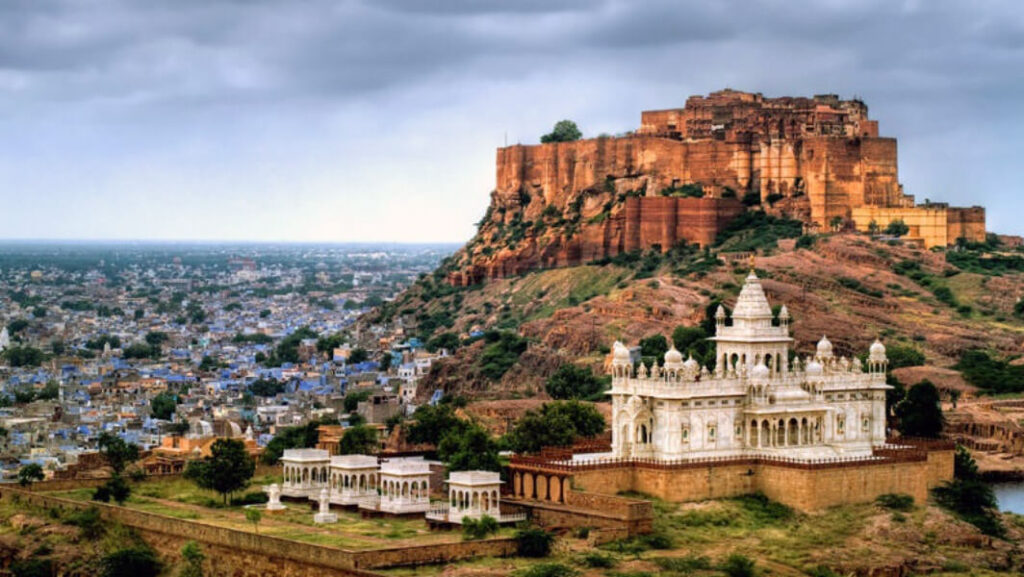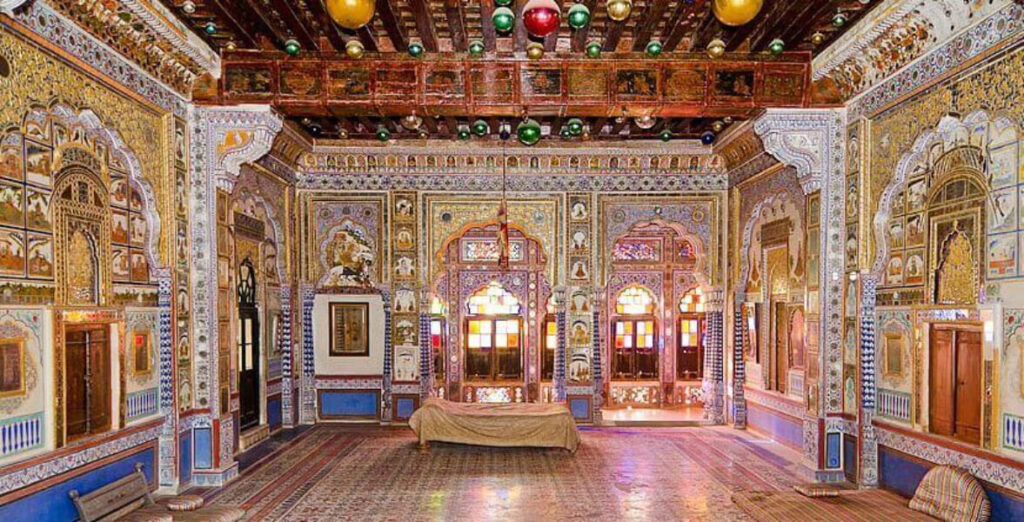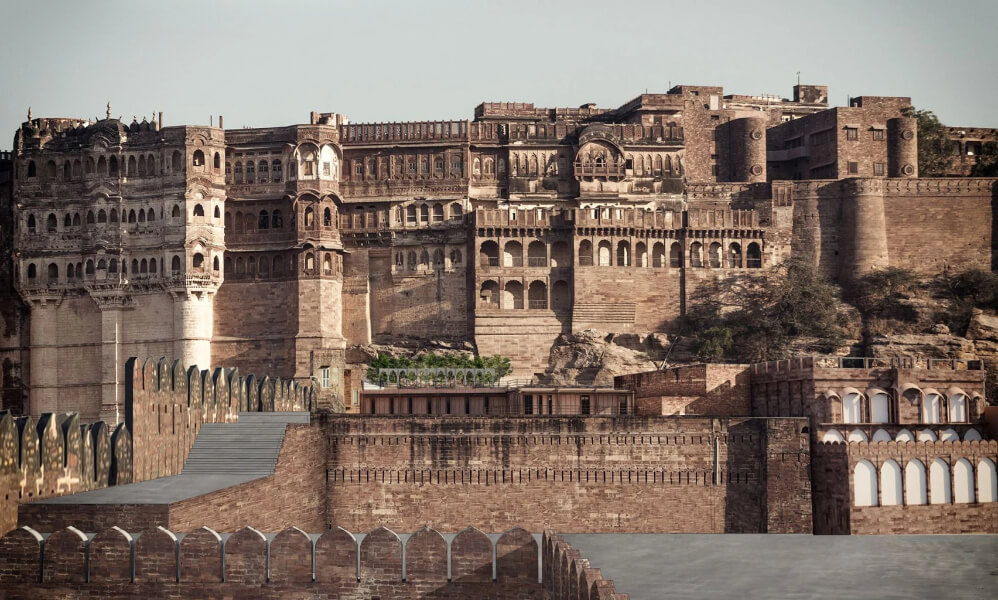Introduction : Jodhpur Fort, also known as Mehrangarh Fort, stands as an architectural masterpiece and a testament to the rich history and grandeur of the city of Jodhpur in Rajasthan, India. With its towering walls, intricate architecture, and panoramic views, the fort has captured the imagination of visitors for centuries. This article delves into the fascinating history, architectural features, and the prominent rulers associated with Jodhpur Fort, providing a comprehensive understanding of its significance in Indian heritage.

I. Historical Background : A. Foundation and Early History: The foundation of Jodhpur Fort dates back to 1459 when Rao Jodha, the chief of the Rathore clan, laid its cornerstone atop a rocky hill. The Rathore dynasty strategically built the fort to protect the Rathore dynasty and the Rajput Era. They also used it as a stronghold against enemy invasions.
B. Expansion and Development: Under subsequent rulers, especially Maharaja Jaswant Singh and Maharaja Ajit Singh, the fort underwent significant expansion and development. New palaces, courtyards, temples, and other structures were added, enriching the architectural and cultural heritage of the fort.

II. Architectural Splendor : A. Entrance Gates and Defensive Features: The fort is accessible through seven imposing gates, including the famous Jayapol and Fattehpol, each guarding a specific direction. The gates showcase intricate carvings, iron spikes, and defensive features that highlight the fort’s military significance.
B. Palaces and Courtyards: Within the fort complex, magnificent palaces and courtyards reflect the opulence and artistic brilliance of the Rajput era. The palaces, including Moti Mahal, Phool Mahal, and Sheesh Mahal, exhibit exquisite artwork, mirror work, frescoes, and ornate ceilings, providing a glimpse into the luxurious lifestyle of the royal inhabitants.
C. Temples and Religious Structures: Jodhpur Fort houses several temples dedicated to Hindu deities, such as Chamunda Mataji, Ganesh, and Shiva. These temples display intricate carvings and offer serene spaces for worship within the fort’s premises.

D. Museum and Artifacts: The fort houses a well-curated museum that showcases a vast collection of artifacts, including weapons, costumes, paintings, and musical instruments. The museum provides visitors with insights into the rich cultural heritage and historical significance of the fort and its rulers.
III. Prominent Rulers : A. Rao Jodha and the Foundation of Jodhpur: Rao Jodha, the founder of Jodhpur, established the fort as the seat of the Rathore dynasty. His vision and strategic acumen laid the foundation for the fort’s construction, marking the beginning of Jodhpur’s glorious history.
B. Maharaja Jaswant Singh: Maharaja Jaswant Singh played a pivotal role in expanding and beautifying the fort. His reign witnessed the addition of stunning palaces, intricate artwork, and the construction of important structures within the fort’s complex.

C. Maharaja Ajit Singh: Maharaja Ajit Singh, known for his courage and progressive rule, further enhanced the fort’s architecture and commissioned the construction of the beautiful Phool Mahal (Palace of Flowers). His patronage of the arts and architecture left an indelible mark on Jodhpur Fort.
D. Other Notable Rulers: The fort witnessed the rule of other notable rulers, including Maharaja Abhay Singh, Maharaja Man Singh, and Maharaja Umaid Singh, each contributing to the fort’s legacy and leaving behind their distinct imprint on its architectural splendor.
IV. Present Significance and Conservation Efforts : Today, Jodhpur Fort stands not only as a historical monument but also as a cultural center that hosts various events, festivals, and exhibitions, showcasing the vibrant heritage of Rajasthan. The fort’s architectural magnificence attracts tourists from around the world, who are enchanted by its grandeur and rich history.
Efforts have been made by the Mehrangarh Museum Trust and various conservation organizations to preserve and restore the fort’s architectural treasures. Extensive restoration projects have been undertaken to maintain the structural integrity of the fort and protect its invaluable heritage for future generations.
Conclusion
Jodhpur Fort, with its compelling history, awe-inspiring architecture, and association with notable rulers, stands as an epitome of Rajasthan’s cultural heritage. The fort’s palaces, courtyards, temples, and defensive features narrate the stories of valor, artistic brilliance, and a bygone era of royal splendor. Jodhpur Fort continues to enthral visitors, offering a glimpse into the opulent lifestyle of the past and captivating the imagination with its breathtaking architectural details. As a symbol of Rajasthan’s Rajput rich legacy, Jodhpur Fort preserves the essence of Indian history, leaving an indelible mark on the hearts of all who experience its grandeur and magnificence.



Leave a Comment